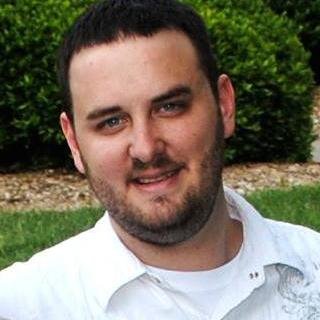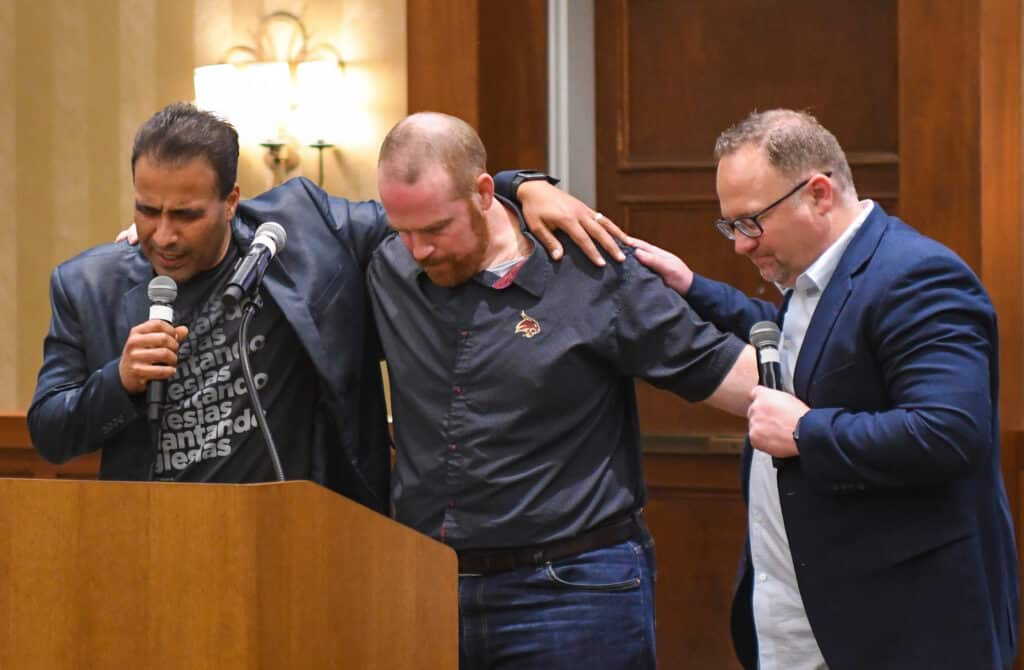LAREDO—They call her “La Santa Muerte,” the Saint of Death, and her followers have multiplied rapidly over the last decade as violence has gripped Mexico and spilled across the border, say missionaries who have witnessed the death cult’s growing influence.
From Mexico City to border towns such as Laredo, and lately in large American cities such as Houston, Dallas, Los Angeles and Chicago, her cloaked, skeletal icon, usually depicted gripping the Grim Reaper’s scythe, is often seen hanging from the windows, entryways and sometimes on the tattoos of her disciples.
Her appeal lies in basic human desires, especially appealing to the poor and to drug runners, who entreat her for protection and vengeance.
“Healing, money, protection, or they want power,” explained Orpha Ortega, who along with her husband, William, serves as a Southern Baptist missionary in Mexico City.
Santa Muerte is a growing concern for Christian pastors in border towns such as Laredo, where a meeting last month hosted by Southern Baptist missionaries drew Spanish-speaking pastors, church leaders and at least one concerned police officer, whose experiences at a local jail prompted him to attend. (Spanish-language video of the meeting is accessible at sbtexas.com/videos.)
The death cult figures prominently in the surging violence by Mexican drug traffickers, known as narcos, in interior Mexico and along the U.S.-Mexico border, William Ortega told those at the meeting.
The Ortegas have ministered for six of the 12 years they’ve been in Mexico City in the Tepito neighborhood—notorious for its thriving black market. Poverty, drugs and violence are pervasive and the largest shrine to Saint Death is an institution there.
Of 28 million people in Mexico City, about 2 million are estimated to be followers of Saint Death, Ortega said, with large numbers of them in Tepito.
Last week, the Ortegas welcomed the news that Mexican authorities had arrested the leader of that Tepito shrine and the closest thing the cult has to a high priest, David Romo, on kidnapping and money laundering charges, according to multiple news accounts.
Increasingly, the death cult has moved north, making inroads into border towns and American cities where Mexican immigrants find work.
Ortega said adherents are largely two groups: drug dealers and the poor, with the former seeking protection from authorities and vengeance on their enemies and the latter seeking healing, protection from the violence around them, and prosperity. The death saint, her followers claim, offers all of the above.
A Baptist worker in the Laredo area told the TEXAN he hears testimonies of healing from cancer, AIDS and other ailments at the hands of Saint Death.
“But most of the time, their promise of healing or protection involves the killing of someone else in order to receive a miracle or in order to receive a protection,” he said.
That was one of the points Ortega emphasized during the Laredo meeting. In the Texas border town and across the Rio Grande in Nuevo Laredo is the largest number of Saint Death followers along the Rio Grande, Ortega said.
Often, Christians are seen as enemies of the cult for their winning converts and refusing to syncretize orthodox Christianity with the death cult.
Although the Mexican government officially removed Santa Muerte from its list of recognized religions in 2005 and the Roman Catholic church has deemed it a pagan cult, many of its adherents are said to mix their Catholicism with Santa Muerte practices, the missionaries said.
With its authority in mostly oral tradition and its roots in ancient Aztec and Mayan death gods, the cult easily spreads its message through folklore. Worship practices include the placing of rum, flowers, or candy at the feet of a Santa Muerte altar, begging her favor in exchange for her favorite gifts.
In Mexico City, the Ortegas have had success in some areas planting churches and winning converts, but they said in Tepito, some of the churches don’t last long “because they are weak Christians and it is hard for them to grow with all of the opposition around them.”
“You can go there [to Tepito] and give them a tract and they will read it, but it’s almost like fighting against Satan himself,” Orpha Ortega said. “It’s a real battle there.
“We still have not been harmed and are grateful to God for that. So continue praying for us to be strong and be brave. And for other people for God to open their eyes.”
In some border towns, where many of her followers are either tied to drug cartels or are seeking protection from them, the rise of the death cult has created obstacles to the gospel.
“It’s affecting a lot,” said one missionary working along the border. “First of all, they teach their followers they cannot talk to us. We are Christian, we are their enemies, they are taught. Secondly, they try to attack us in different ways. As a missionary here, they have threatened me, written notes. I’ve been on their watch list. It is spiritual warfare.”
On the Texas side of the border, the missionary was quick to note that short-term missionary volunteers are relatively safe. “It is a problem for us because we are encountering them on a daily, long-term basis.”
“Pray for safety while I’m doing the work,” the missionary implored those who would read his interview. “Pray for my integrity and holiness. Pray the Lord will provide the right leaders to provide churches. The only way we will win the fight is to plant those churches that preach the truth.”
Bruno Molina, SBTC ministry associate for language evangelism, said the death cult “is a challenge to the gospel not only in Mexico, but increasingly beyond the U.S border area into other areas of Texas. The very name of its representative organization, roughly translated as ‘The Traditional Church of Mexico-USA,’ implies that they do not see themselves as just a Mexican ‘religious’ phenomenon but that they lay claim to the U.S. as part of their cultic turf.”
“They claim 1.5 million adherents here in the U.S. and, due to our shared border with Mexico, many of them necessarily reside in Texas,” Molina added. “This is evident not only in our jails, but also in Texas front yards that display Santa Muerte figures, cars and pick-up trucks decorated with Santa Muerte decals, and people who are tattooed with Santa Muerte figures. The Santa Muerte cult is virulently anti-Christian in that it promotes devotion to someone, namely Saint Death, other than God through Jesus Christ.
“Our evangelism department is committed to exposing this challenge to the gospel and working with our pastors to equip their church members to meet this challenge.”














